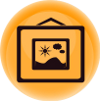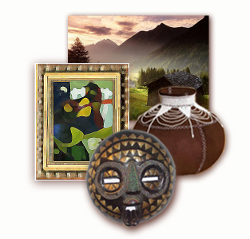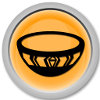ConceptAnything made by a person, or people, can be documented using the concepted of Producer, Description and Management. The CollectionOD will manage your collection, inventory or stock and can be used as an extensive research tool. It also offers two Management modes: Museum and Commercial. This allows you to manage your collection / inventory as a museum or business. ScopeThe CollectionOD is ideal for museums, national collections, provincial / state collections, city / municipal collections, corporate / business collections, universities, private collectors, . . . The CollectionOD can be used as a simple inventory system, or an extensive research tool that can be used as a website or integrated into a website - it can also be installed on an intranet. Some of the main sections include:
Full specificationsIt is important to note the CollectionOD can be purely used for documentation and management purposes, secure from any Internet users and only for use internally to your organization, business or private collection. The CollectionOD can also be used to make information available to Internet users. There are a number of options to integrate this product into your website. It is highly flexible to suit your Internet requirements. More than a simple inventory: the CollectionOD uses the concept that anything made by a human, or humans, can be documented using a producer, description and management approach. An added global, or conceptual feature of the database is it's ability to accommodate any type of collection, whether a collection of items where each producer is known, or a collection of items that have no producers at all. In other words, the database can be item-centric, or producer-centric, or both. Scope: anything from a shoe to a work of art, a chair to a photograph ... each has a producer (an individual, a group of people, an organisation, etc); it can also be described (size, materials, etc) and it can be managed (purchased, donated, stored, etc). Search Engine Friendly: the number of times you have used a search engine such as Google and found a page of information that has no reference to the rest of the website, i.e. no menu or link to the home page. Although you find the content, it is not displayed in the context of the website. The CollectionOD is highly search engine friendly and information retrieved is brought up in the context of your website - full menus, branding and layout. Search Engine Optimisation (SEO): the CollectionOD will improve your search engine rankings the more information you add to your collection / inventory. Search engines also follow links to index the contents of websites so the more items you have, the more link your have to relevant information. Item / artwork status: this is a powerful feature that lets you set the Status of any Items posted on your website:
How information is managed: accessed via one login where you see an Administrator interface that assists in finding, adding and editing the documentation. The Public interface is what the visitor sees when they browse through the collection / inventory. Images: you can upload images directly from your computer to the CollectionOD and these are displayed alongside the items. Any number of images can be associated with an item and you can set the order the images are displayed. You can even set the image to highlight - appear when a visitor views a list of items on a page. If you associate a large amount of images to an item these are automatically calculated and divided into various pages with 10 per page. This makes easier to manage a large amount of images and you can avoid a long download time. A useful feature when displaying various views of an item, i.e. sculpture or furniture. Articles: you are able to publish full articles that are automatically referenced to any item. For example: someone can read brief information about a topic and then click through to read a full feature article such as a review, research, etc. Search: as you add information to the CollectionOD it automatically becomes searchable. Support: access the continuously updated online support directly. Description of an Item: a large number of categories are available to record descriptive information about an item, such as: title, type, physical description, measurements, medium, keywords, dates, etc. Producer details: these include identity, dates, geographical location, biographical details, cultural classification, etc. Management details: there are a number of management features available such as: provenance, documentation and verification details, administrative information, storage details, condition, expenses relating to each item, price paid, de-accessioning, etc.
| ||||||||||||||||||||||||
 CollectionOD
CollectionOD










